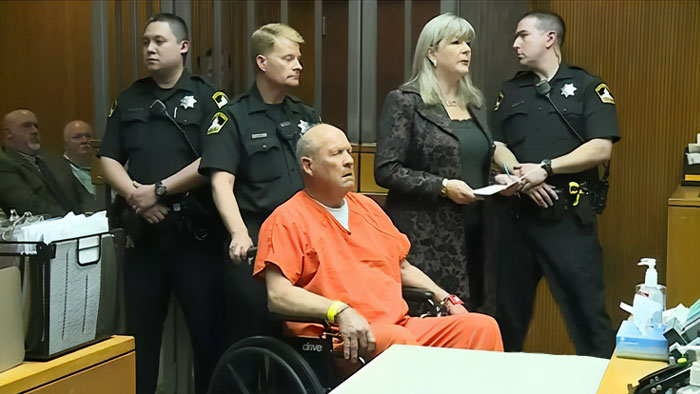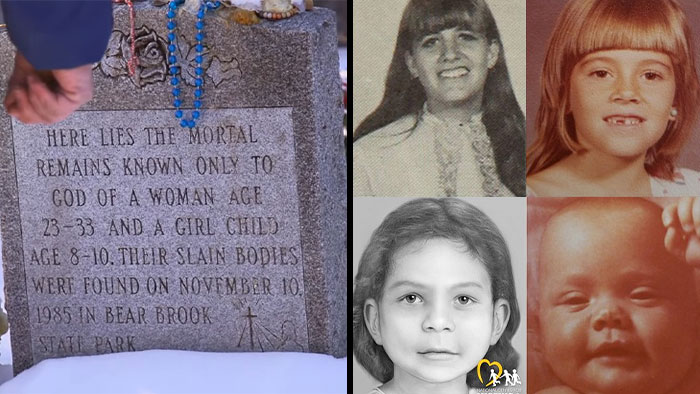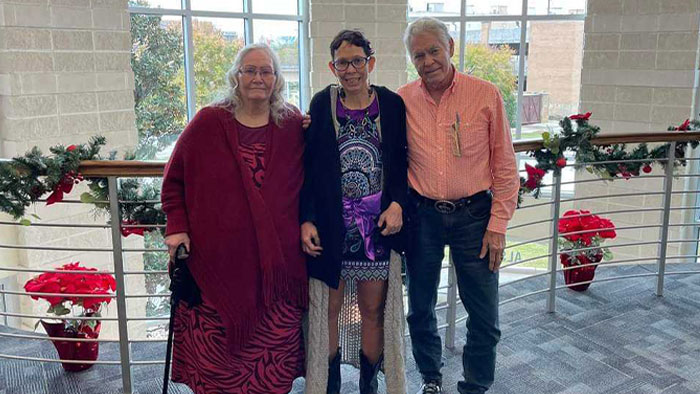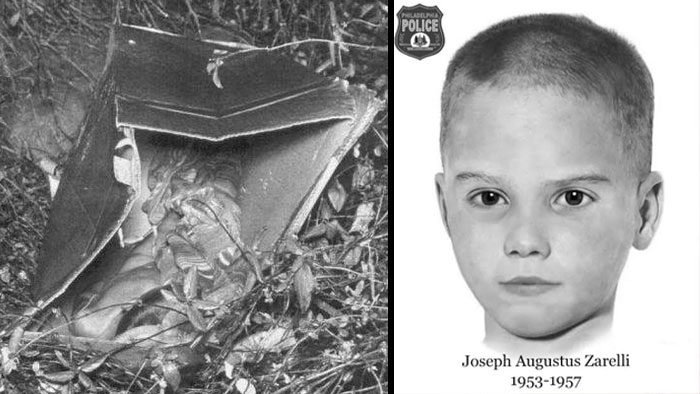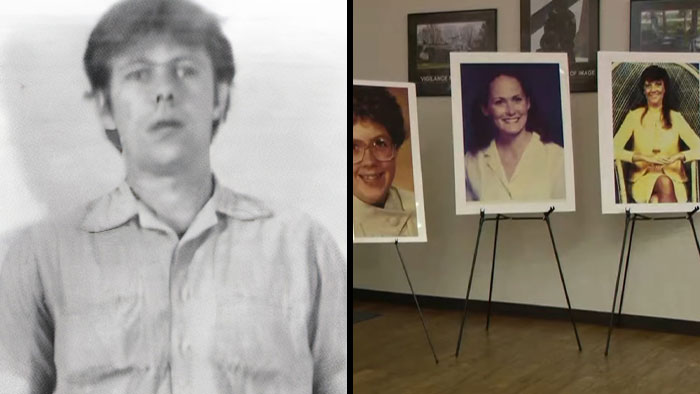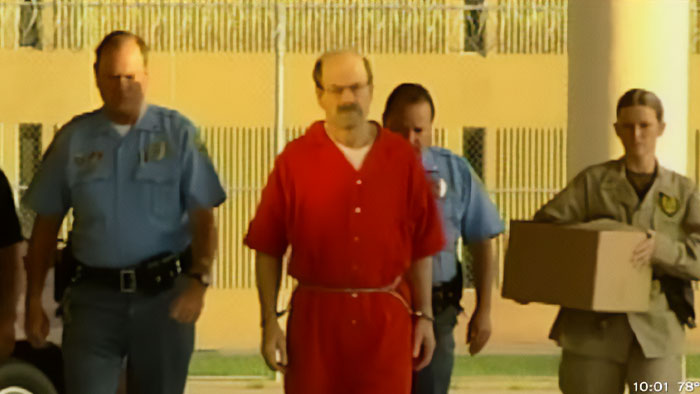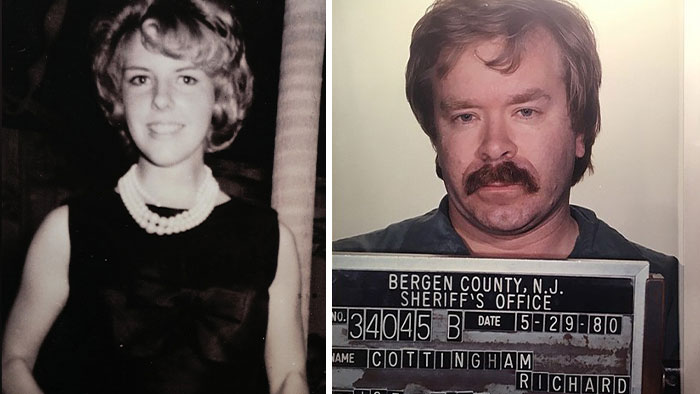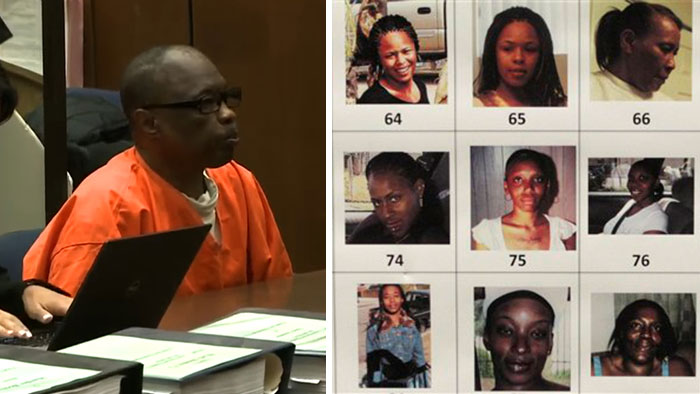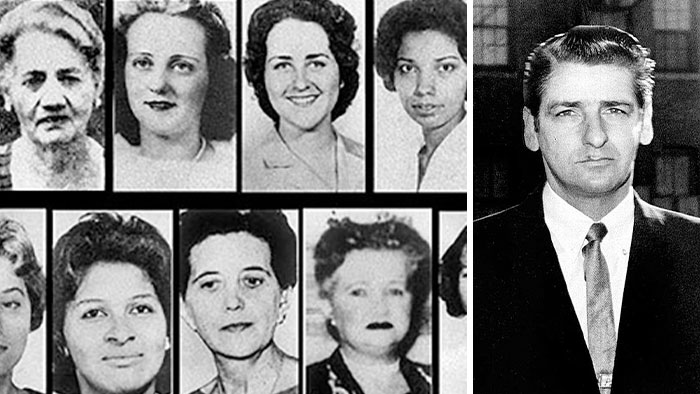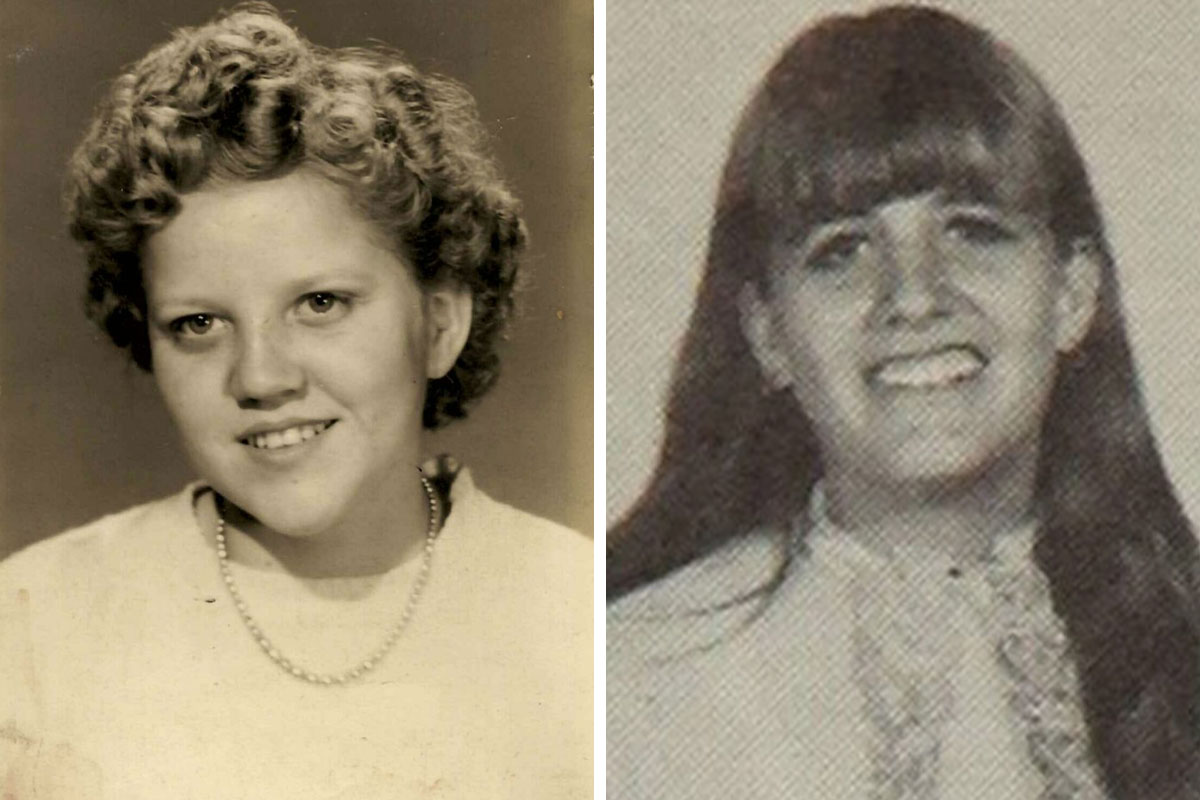
11 Harrowing Cold Cases That Were Cracked Decades Later Thanks To Tech And Science Advancements
In the 21st century, genetics genealogy revolutionized the world of crime scene investigation. The technique helps identify unknown suspects or victims by comparing DNA evidence from a crime scene to genetic databases, allowing law enforcement to solve decades-old cases.
This method was made possible thanks to advances in DNA testing technology and the expansion of genetic databases that have made it accessible to the general public.
In the following murder cases, progress in DNA technology has played a crucial role in tracking down perpetrators and identifying deceased individuals, finally providing answers to grieving families.
This post may include affiliate links.
"Golden State Killer" (1974-2018)
The Golden State Killer was responsible for 13 murders, 60 home invasions, and 50 rapes in Los Angeles during the 1970s and 1980s. Still, he managed to remain undetected for decades.
To find the murderer, whose real name is Joseph James DeAngelo, investigators compared online genealogy databases with the DNA collected from the crime scenes, just like in the Bear Brook case.
In 2018, they found a match, and DeAngelo, a former police officer, was arrested and charged with 13 counts of murder.
Bear Brook Murders (1985-2017)
In 1985, a hunter was walking at New Hampshire’s Bear Brook State Park when he stumbled upon the bodies of a young girl and an adult woman inside a metal drum.
Fifteen years later, in 2000, the corpses of two young women were discovered inside another drum. Nobody knew who the women were.
Flash forward to 2017; investigator Barbara Rae-Venter used genetic genealogy to link a man named Terry Rasmussen to the Bear Brook murders. The killer, who was also the father of one of the children, had been dead for seven years by the time of the breakthrough.
The identities of the remaining three victims—Marlyse Elizabeth Honeychurch and her daughters, Marie Elizabeth Vaughn and Sarah Lynn McWaters—were discovered two years later thanks to the work of amateur investigator Becky Heath.
Heath cracked the case after discovering a message posted on Ancestry.com from someone from the Honeychurch family searching for her toddler, who had disappeared close to the time of the killings.
The identity of the fourth victim (Rasmussen’s daughter) remains unknown.
"Lady Of The Dunes" (1974-2022)
Richard Hanchett had heard all types of stories about his biological mother. He knew that she had red hair and blue eyes and that she really enjoyed singing.
His mother chose to have him adopted in 1958, right after his birth, entrusting the newborn child to a couple who worked with her at a plant.
Richard was always hopeful that he would learn more about his mother, which is why he took a DNA test through Ancestry.com when he became an adult.
Later on, Richard got an answer, though it wasn’t what he was expecting to hear.
After meeting her family in Tennessee, he was shocked to discover that his mother had been missing since the 1970s.
In 2022, FBI investigators using genetic genealogy officially linked The Lady of the Dunes—a previously unidentified woman found dead in the dunes of Provincetown, Massachusetts—to Richard’s mom, whom he learned was called Ruth Marie Terry.
Investigators believe that a now-deceased man named Guy Rockwell Muldavin was responsible for the crime.
Ms. Terry was thought to have married Muldavin, an antiques dealer, before she was killed. In 1960, the man was arrested in connection with the murders of his former wife and daughter after their mutilated remains were found in their Seattle home.
Wow, talk about opening the proverbial can of worms! Yet it at least Richard's search led to closure for himself and the family. What a tragedy.
Murder Of Jay Cook And Tanya Van Cuylenborg (1987-2019)
In 2015, Chelsea Rustad entered a contest and won a DNA “spit kit.” Little did she know that, after uploading her profile to a database, she’d help solve a decades-long cold murder case.
Because the woman submitted her DNA, investigators connected her cousin, William Earl Talbott II, to the 1987 double homicide of Jay Cook and Tanya Van Cuylenborg.
The Canadian couple was killed while visiting Seattle from British Columbia to collect parts for Jay’s family business.
The stored DNA from the crime scene, authorities found, perfectly matched that of Rustad’s 59-year-old cousin.
The discovery led to Talbott’s trial and conviction in 2019.
"Police told me that without my DNA, he would not have been arrested," Rustad told People Magazine. Hadn’t she won the spit kit, “there would have been no trial,” and the victims’ families “would have never had answers."
The Kidnapping Of Melissa Highsmith (1971-2022)
In August 1971, Melissa’s newly separated mother placed an ad in the newspaper looking for a babysitter to watch her daughter while she was gone.
A woman responded and asked the mother if she could bring her 21-month-old child to her backyard, where she was watching other children.
Then, she never returned the child.
Her family appeared on several national media outlets and podcasts, hoping to reunite with their daughter.
Their wishes finally came true in November last year when Melissa was found alive and reunited with her loved ones.
Her family achieved this seemingly impossible goal after taking an at-home DNA test through the genealogy service 23AndMe. A few days later, results came back, linking Melissa’s father to a granddaughter he never knew he had. Ultimately, his father thought, the unknown relative had to be her.
Melissa, who went under the name Melanie, had never found out about her kidnapping. She fled home at age 15 after a troubling relationship with the woman who raised her.
Now, she uses her name given at birth.
Weird that she had a bad relationship with the woman who kidnapped her 🫠
"Boy In A Box" (1957-2019)
In 1957, a young boy’s body was found inside a cardboard box in the woods of Philadelphia.
The victim’s identity remained a mystery for decades, which is why the boy was named “America’s Unknown Child.”
Eventually, a court granted investigators access to exhume the child’s body to see if they could locate his family using the genetic genealogy technique.
In 2019, investigators were able to identify the boy’s mother and father thanks to a second cousin who had uploaded his DNA to a public database. Two years later, the victim was officially given a name: Joseph Augustus Zarelli, born in 1953.
His assassin was never found.
"The I-65 Killer" (1987-2022)
The Days Inn killer preyed on women working as night clerks at motels along the I-65 Midwest highway between Indiana and Kentucky.
Between 1987 and 1990, four women were attacked by the serial killer. While three of the victims were sexually assaulted and shot, the fourth one was able to escape.
The fourth woman gave investigators a description of the attacker: a bearded man in his late 30s to mid-40s with green eyes and a knit cap.
Investigators reached their breakthrough more than three decades later by cross-checking DNA evidence with ancestry records.
Last year, the murders of Vicki Heath, Margaret "Peggy" Gill, and Jeanne Gilbert were connected to a man named Harry Edward Greenwell. The serial killer died in 2013 after serving two prison sentences in Iowa and Kentucky for a string of violent crimes.
"Btk" Killer (1974-2004)
Dennis Rader was responsible for the murders of at least 10 people across Kansas from 1974 to 1991. The killer was interested in playing a game of “cat and mouse” with the police authorities, sending cryptic letters about his crimes with clues only the perpetrator would know.
The revolutionary breakthrough came in 2004, when the serial killer, who called himself the B.T.K. Strangler, sent a floppy disk to the police and dared them to find him.
Upon analyzing the clue, investigators discovered metadata on the disk that led to his identity. From there, authorities obtained DNA from Rader’s daughter without her knowledge and found a close match with the DNA obtained from one of the crime scenes.
Rader is now serving life in prison.
I'm not American, but this guy pisses me off. BTK Killer is the name that he gave himself. He shouldn't have had that privilege.
"Times Square Killer" (1968-2022)
In 1968, Diane Cusick, a 23-year-old dance instructor, left her class in Long Island during the night to head to the mall for a new pair of shoes.
Hours later, the young woman’s parents found her dead in the backseat of a car, her body showing signs of being beaten, raped, and strangled.
In 2022, sophisticated DNA testing linked Richard Cottingham—who had been convicted of or admitted under oath to 11 killings in New Jersey and New York—to the murder.
While DNA from Cusick’s crime scene had been tested before, the samples were only matched to Cottingham’s profile in a federal database last year.
Anne Donnelly, the Nassau County district attorney, said that the breakthrough was possible thanks to technological advances that allow investigators to conduct more thorough DNA tests.
“Thankfully,” Donnelly said, “he will spend the rest of his life in prison, where he belongs.”
"The Grim Sleeper" (1984-2016)
Lonnie Franklin Jr, also known as The Grim Sleeper, targeted young Black women who lived in Los Angeles and struggled with drug addiction. After he killed his victims, he dumped their naked bodies in dirty neighborhood alleyways.
In May 2016, the serial killer, who stalked LA between 1984 and 2007, was found guilty of murdering nine women and a teenager, though it’s believed there were more victims.
The case was ultimately cracked in the late 2000s, after Franklin’s son provided DNA samples following his arrest for carrying a weapon. Investigators found that his DNA closely matched that obtained from the cold case.
To confirm the connection, a detective posed as a busboy to collect DNA from a partially eaten slice of pizza that Franklin had left behind.
The killer died in his prison cell in March 2020.
"The Boston Strangler" (1962-2013)
While Albert DeSalvo confessed to having killed 13 women in Boston between 1962 and 1964, investigators didn’t believe him, as there was no physical evidence linking him to the crimes.
He was still sentenced to life imprisonment for earlier crimes, including sexual offenses and robbery.
It wasn’t until 2013 that the Boston Police Department confirmed his confession.
DNA technology allowed investigators to link DeSalvo to the last of his victims, 19-year-old Mary Sullivan, who was raped and murdered in 1964. She was the only woman for which DNA evidence (a semen sample) was available.
According to Suffolk County District Attorney Dan Conley, investigators used a DNA sample from a water bottle belonging to the serial killer’s nephew, which produced a match with a Y chromosome in the semen sample from 1964.
The Boston Strangler, who made his way into the homes of trusting single women during the 1960s only to murder them once he was let inside, was stabbed to death in prison in 1973.
Controversial opinion but I'm kind of glad he was stabbed to death. Feels like a bit of justice without opening the can of worms that is the death penalty
People warn about doing these ancestry tests, and with good reason, but OTOH, if it helps to solve these terrible crimes (and by jailing the criminals, preventing more of them), I'm not unhappy to have done one myself. Don't really expect a serial killer to come up in my family, but then, who does?
It might be stupid to use the whole "If you didn't do anything wrong, you have nothing to hide" line but it's true. Doing a DNA test also gives you information into your family history, you get to meet family members you've never knew existed, and you can help solve some great mysteries. My great aunt gave up a child for adoption and through ancestry, they contacted me and got to meet their biological family. I also met up with a cousin who is doing our family tree back hundreds of years which is super cool. There is also the chance you could find out if there is any genetic family issues you previously didn't know about and you can be tested for.
Load More Replies...I do not believe that the dentist David Acer infected Kimberly Bergalis with AIDS back in 1987. I question the DNA evidence from then and wish it was retested today.
People warn about doing these ancestry tests, and with good reason, but OTOH, if it helps to solve these terrible crimes (and by jailing the criminals, preventing more of them), I'm not unhappy to have done one myself. Don't really expect a serial killer to come up in my family, but then, who does?
It might be stupid to use the whole "If you didn't do anything wrong, you have nothing to hide" line but it's true. Doing a DNA test also gives you information into your family history, you get to meet family members you've never knew existed, and you can help solve some great mysteries. My great aunt gave up a child for adoption and through ancestry, they contacted me and got to meet their biological family. I also met up with a cousin who is doing our family tree back hundreds of years which is super cool. There is also the chance you could find out if there is any genetic family issues you previously didn't know about and you can be tested for.
Load More Replies...I do not believe that the dentist David Acer infected Kimberly Bergalis with AIDS back in 1987. I question the DNA evidence from then and wish it was retested today.
